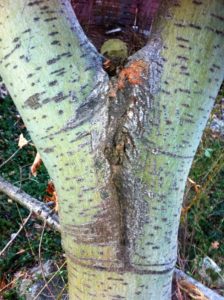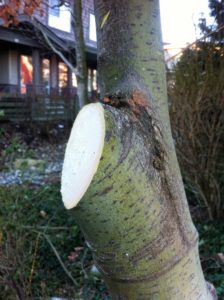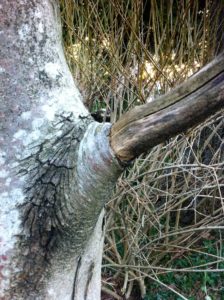Last week, while my crew was busy staying busy on yet another sub-zero temperature morning, I stepped into a dry riverbed area. We do maintenance here just a few times a year. It’s a semi-wild buffer between a road and residences.
It was there that I found a great example of co-dominant stems. On a maple tree. Acers are well-known for having co-dominant stems.

Co-dominant stems happen when two apical buds grow at the top of a stem together. As they grow bigger, their bark crashes at the union and becomes included. This makes the junction union very weak and very likely to one day fail. Say, in a windstorm or under snow and ice load.
So I did a little experiment since this is a low-profile area. The left stem grew into a neighbouring pin oak tree (Quercus palustris). Right into the oak. So I cut it out with a small chainsaw.

But this comes with some risk. It’s best to do this kind of pruning when the tree is young. Remember, this is a stem, not a branch. Unlike branches, it lacks the protective bark protection zone. This is a zone where chemicals seal off the branch so the stem doesn’t get diseased.

In the best case, the right stem enjoys its life as the leader and the tree outlives me.
In the worst case, disease gets in and eventually kills the tree.

